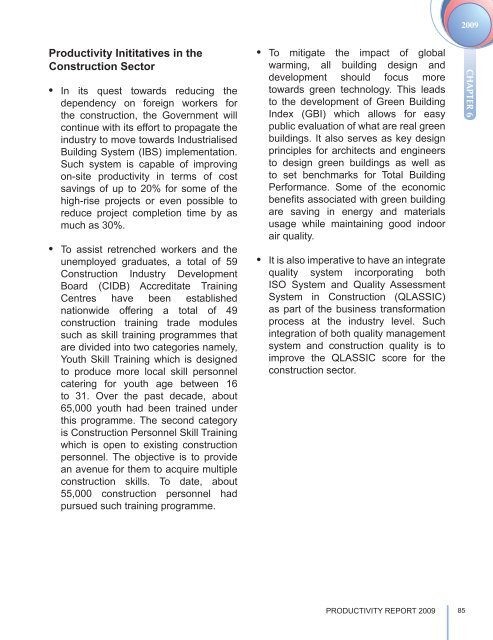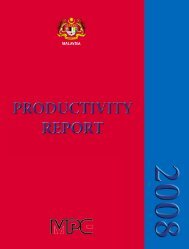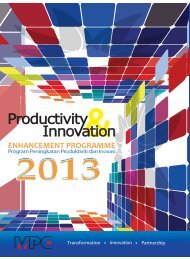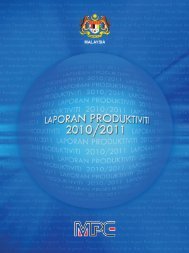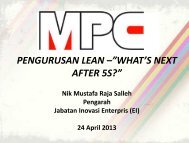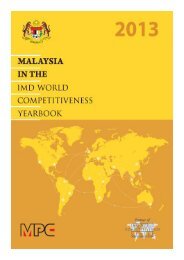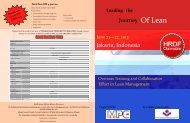Overview - MPC
Overview - MPC
Overview - MPC
You also want an ePaper? Increase the reach of your titles
YUMPU automatically turns print PDFs into web optimized ePapers that Google loves.
2009<br />
Productivity Inititatives in the<br />
Construction Sector<br />
• In its quest towards reducing the<br />
dependency on foreign workers for<br />
the construction, the Government will<br />
continue with its effort to propagate the<br />
industry to move towards Industrialised<br />
Building System (IBS) implementation.<br />
Such system is capable of improving<br />
on-site productivity in terms of cost<br />
savings of up to 20% for some of the<br />
high-rise projects or even possible to<br />
reduce project completion time by as<br />
much as 30%.<br />
• To assist retrenched workers and the<br />
unemployed graduates, a total of 59<br />
Construction Industry Development<br />
Board (CIDB) Accreditate Training<br />
Centres have been established<br />
nationwide offering a total of 49<br />
construction training trade modules<br />
such as skill training programmes that<br />
are divided into two categories namely,<br />
Youth Skill Training which is designed<br />
to produce more local skill personnel<br />
catering for youth age between 16<br />
to 31. Over the past decade, about<br />
65,000 youth had been trained under<br />
this programme. The second category<br />
is Construction Personnel Skill Training<br />
which is open to existing construction<br />
personnel. The objective is to provide<br />
an avenue for them to acquire multiple<br />
construction skills. To date, about<br />
55,000 construction personnel had<br />
pursued such training programme.<br />
• To mitigate the impact of global<br />
warming, all building design and<br />
development should focus more<br />
towards green technology. This leads<br />
to the development of Green Building<br />
Index (GBI) which allows for easy<br />
public evaluation of what are real green<br />
buildings. It also serves as key design<br />
principles for architects and engineers<br />
to design green buildings as well as<br />
to set benchmarks for Total Building<br />
Performance. Some of the economic<br />
benefits associated with green building<br />
are saving in energy and materials<br />
usage while maintaining good indoor<br />
air quality.<br />
• It is also imperative to have an integrate<br />
quality system incorporating both<br />
ISO System and Quality Assessment<br />
System in Construction (QLASSIC)<br />
as part of the business transformation<br />
process at the industry level. Such<br />
integration of both quality management<br />
system and construction quality is to<br />
improve the QLASSIC score for the<br />
construction sector.<br />
CHAPTER 6<br />
PRODUCTIVITY REPORT 2009 85


